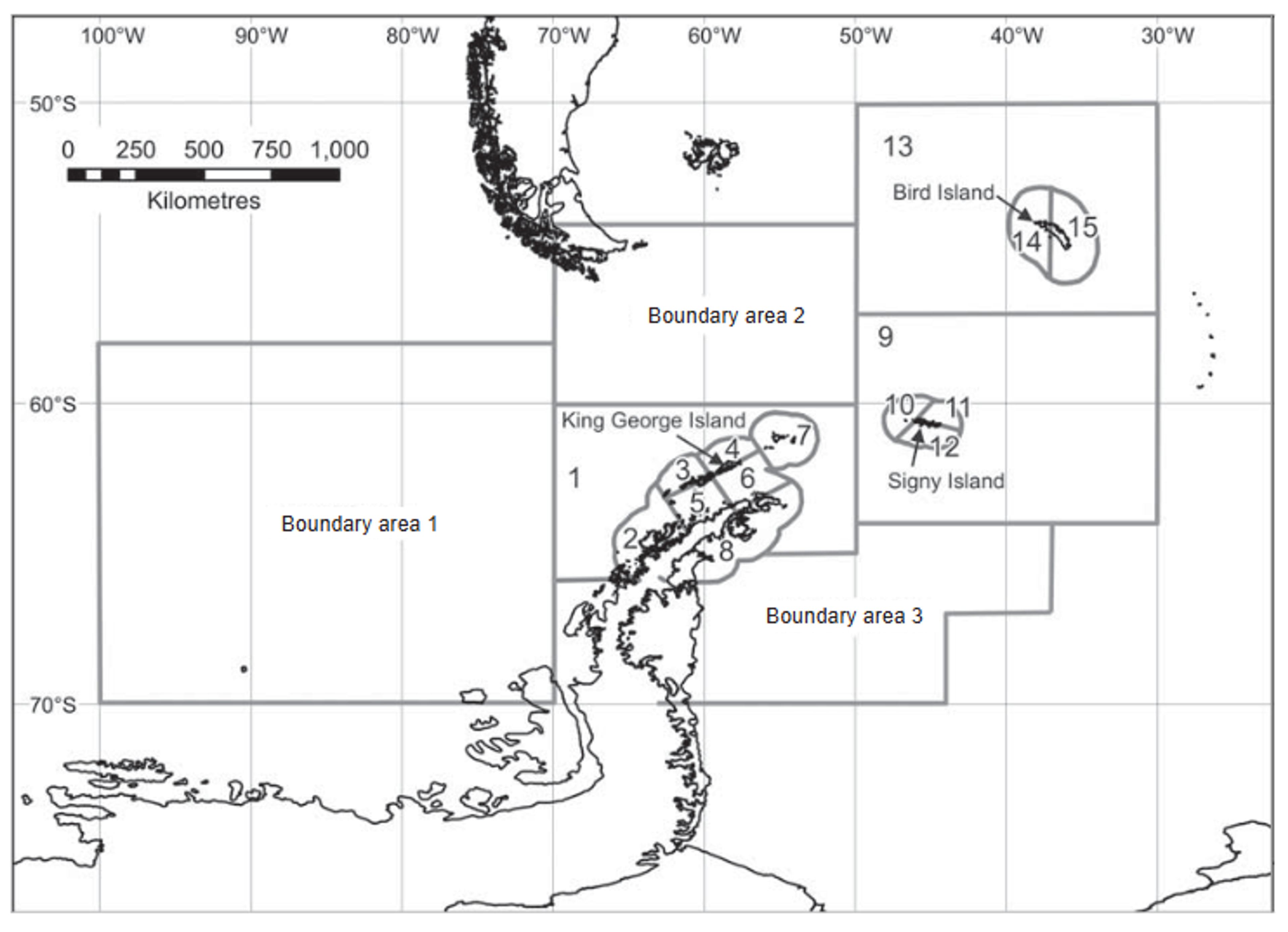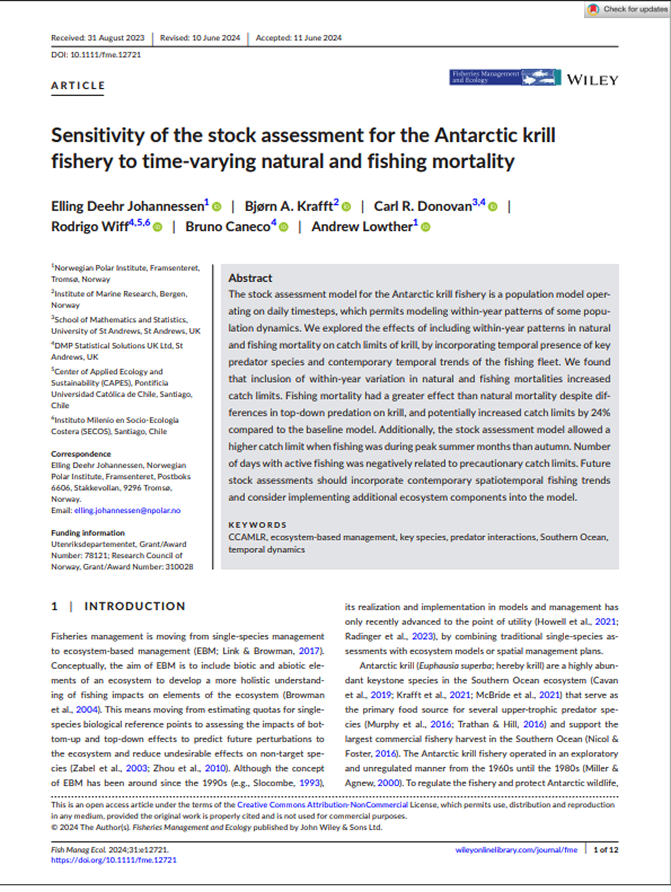Biomass
Fisheries management
Antarctic ecosystem
Krill (Euphausia superba)
A Compilation of Parameters for Ecosystem Dynamics Models of the Scotia Sea – Antarctic Peninsula Region
Summary
This comprehensive study compiled ecosystem data for 15 Small-Scale Management Units in the Scotia Sea-Antarctic Peninsula region to support krill fishery management models. Fish emerged as the largest krill consumers with a total demand of 47.8 million tonnes, with lanternfish consuming twice as much as other fish species. Consumption rates per unit of body weight varied dramatically across species: penguins consumed 103 kilograms of krill per kilogram of body weight per year, seals consumed 76.5 kilograms, while whales (2.0) and fish (3.5-5.2) consumed much less relative to their size. The study provided biological data, population estimates, and krill transport rates from ocean circulation models to support ecosystem management models including KPFM and SMOM. The results revealed major knowledge gaps, particularly in lanternfish population estimates that were extrapolated from limited data collected at King George Island.

1
Map of the Scotia Sea-Antarctic Peninsula region showing the small-scale management zones (zone names listed in Table 2), boundary areas, and locations referenced in the study.Key Findings
1
The total estimated krill demand across all predator groups is 47.8 million tonnes annually. 2
Fish are the largest krill consumers, with lanternfish consuming 25.2 million tonnes and other fish species consuming 12.1 million tonnes. 3
Air-breathing predators consume smaller amounts: penguins (7.1 million tonnes), whales (1.7 million tonnes), and seals (1.7 million tonnes). 4
Krill consumption relative to body weight varies greatly: penguins consume 103 kilograms of krill per kilogram of body weight per year, seals consume 76.5, fish consume 3.5-5.2, and whales consume 2.0. 5
Biological data were compiled for 4 main predator groups across the 15 small-scale management zones. 6
Maximum krill transport rates were calculated using 19 years of ocean circulation model data. 7
Lanternfish population estimates are highly uncertain because they are based on limited geographic data coverage.

